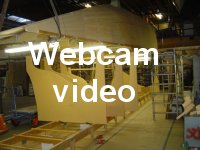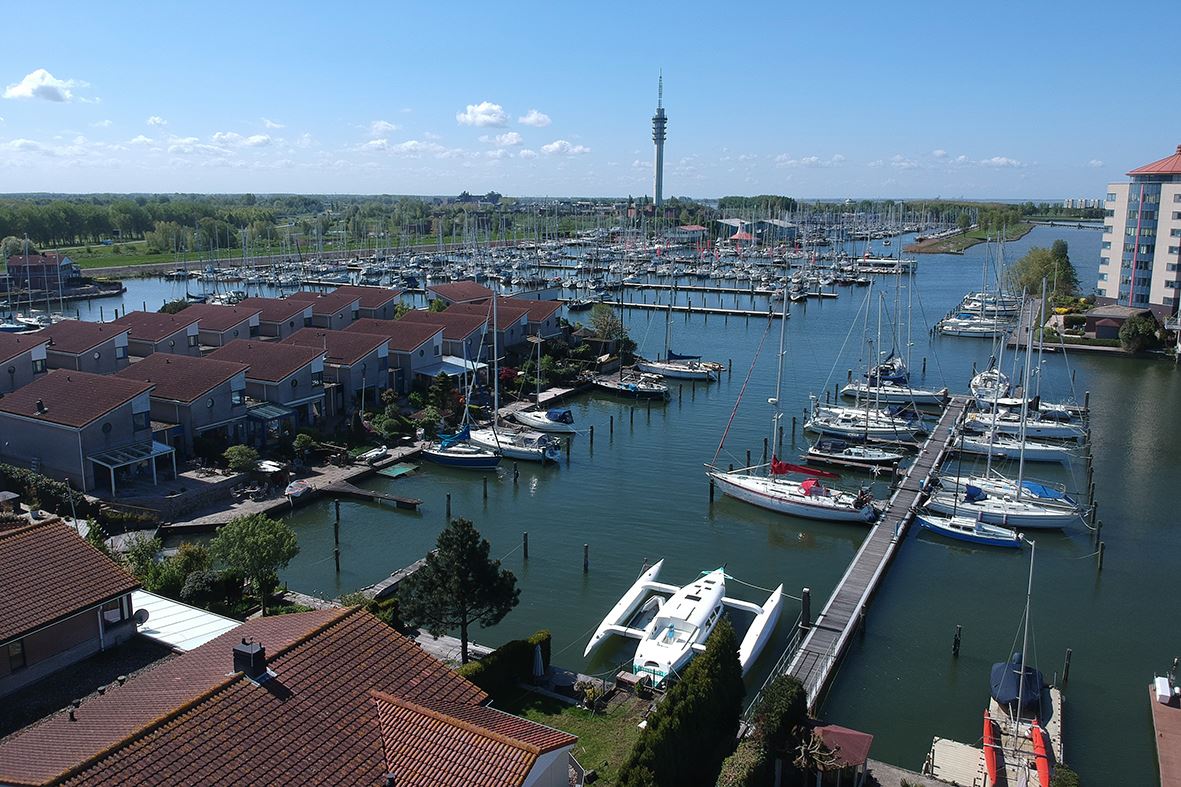

The plans call for an 75 to 80mm fiberglass or carbon tube for the bow wing. Instead of buying such a tube, I made the tubes myself the easy way, with a foam core (rounded 5 layers of 15mm Corecell)

Already at an earlier stage, I decided to refrain of the designed anchor locker in the bow. The bow is the worst place to stow a lot of weight, and no locker gives much more interior space. Besides of that, I’m tired of bringing the anchor home by elbow steam so I decided to mount an electric windlass and the combination with the designed anchor locker is not a logical one. It is best to bring the weight of the windlass, chain and rope as far aft as possible. Just in front of the forward sub beam bulkhead is ample space to create a large chain locker and the same space gives also the opportunity to bring the windlass below deck. The consequence is a chain pipe through the deck between bow wing and windlass locker.

An investigation into windlasses taught me that the vertical type is the most suitable for my application . This is because of the space available in the windlass locker and the improved 180 degrees grip on the gypsy with respect to a 90 degree grip on the gypsy of a horizontal winch. An unforeseen problem occurred when I discovered that most vertical windlasses turn clockwise when hauling the anchor. Because the winch will be mounted on the starboard side means that the chaintube comes too far to the outside of the bow wing and the chain must go downwards along the wall of the chain locker. That’s not a good setup and I would rather saw a winch that turns counterclockwise at hauling of the anchor. Now all winches can turn both sides, but it is the chainpipe that is fixed on the port side of all vertical windlasses . Only the brand Quick offers a left and right version, but unfortunately only for the larger types (Regal, Dave, Duke). However, the smaller Rider model comes without a chain pipe and an email to the Italian manufacturer confirmed me that I can make a DIY solution for the chainpipe on the starboard side of the windlass.
So I purchased the Quick Rider R3 1000W 24V with 8mm/14mm chain/rope gypsy.

Next question is which anchor to use. I’m familiar with CQR, Bruce, Danforth, FOB and Fortress anchors but the new generation anchors appears to be superior to these traditional models. The various tests prove that Spade and Rocna are the best performers and with regards to their seizing guides I need an anchor with a fluke surface of about 1400 sq.cm, which is a Spade S140 or Rocna 25. A nice feature of Spade is that their 140 model is also available in an aluminum lightweight version.

With their 1:1 patterns I made a wooden mock-up of both versions to determine the possibilities for stowing the anchor on the bow wing. The length of both anchors are about the same but the height of the Rocna 25 is much less than the height of the Spade 140. Last but not least, the Rocna is considerable cheaper than the Spade and the lightweight Spade is far beyond my budget.

So I purchased the Rocna 25. More pictures are on my website.
By the way, the knowledge base of Rocna is worth reading.



 Posted by Fram
Posted by Fram 


